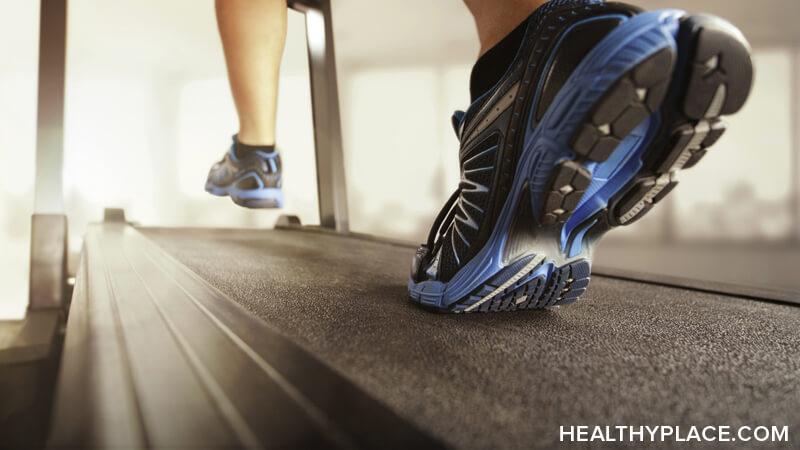Diabetes and Exercise: All About Exercise with Diabetes

Physical activity, exercise, is a key tool for managing diabetes. Learn how a diabetes exercise plan can help you.
Exercise for Diabetics
On this page:
- How can I take care of my diabetes?
- What can a physically active lifestyle do for me?
- What kinds of exercise can help me?
- Can I exercise any time I want?
- Are there any types of physical activity I shouldn't do?
- Can physical activity cause low blood glucose?
- What should I do before I start a physical activity program?
- What can I do to make sure I stay active?
- For More Information
Taking Care of Your Diabetes
Diabetes means your blood glucose, also called blood sugar, is too high. Your body uses glucose for energy. But having too much glucose in your blood can hurt you.
When you take care of your diabetes, you'll feel better. You'll reduce your risk for diabetes complications with your kidneys, eyes, nerves, feet and legs, and teeth. You'll also lower your risk for a heart attack or a stroke. You can take care of your diabetes by
- being physically active
- following a healthy meal plan
- taking medicines, if prescribed by your doctor
What can a physically active lifestyle do for my diabetes?
Research has shown that exercise and other physical activity can
- lower your blood glucose and your blood pressure
- lower your bad cholesterol and raise your good cholesterol
- improve your body's ability to use insulin
- lower your risk for heart disease and stroke
- keep your heart and bones strong
- keep your joints flexible
- lower your risk of falling
- help you lose weight
- reduce your body fat
- give you more energy
- reduce your stress levels
Physical activity also plays an important part in preventing type 2 diabetes. A major Government study, the Diabetes Prevention Program (DPP), showed that modest weight loss of 5 to 7 percent—for example, 10 to 15 pounds for a 200-pound person—can delay and possibly prevent type 2 diabetes. People in the study used diet and exercise to lose weight.
For more information about the study, read: Diabetes Prevention Program . Or call the National Diabetes Information Clearinghouse at 1-800-860-8747 to request a printed copy.
What kinds of diabetes exercise plan can help me?
Four kinds of activity can help. You can
- be extra active every day
- do aerobic exercise
- do strength training
- stretch
Be Extra Active Every Day
Being extra active can increase the number of calories you burn. Try these ways to be extra active, or think of other things you can do.
- Walk around while you talk on the phone.
- Play with the kids.
- Take the dog for a walk.
- Get up to change the TV channel instead of using the remote control.
- Work in the garden or rake leaves.
- Clean the house.
- Wash the car.
- Stretch out your chores. For example, make two trips to take the laundry downstairs instead of one.
- Park at the far end of the shopping center parking lot and walk to the store.
- At the grocery store, walk down every aisle.
- At work, walk over to see a co-worker instead of calling or emailing.
- Take the stairs instead of the elevator.
- Stretch or walk around instead of taking a coffee break and eating.
- During your lunch break, walk to the post office or do other errands.
- Other things I can do:
Do Aerobic Exercise
Aerobic exercise is an activity that requires the use of large muscles and makes your heart beat faster. You will also breathe harder during aerobic exercise. Doing aerobic exercise for 30 minutes a day at least 5 days a week provides many benefits. You can even split up those 30 minutes into several parts. For example, you can take three brisk 10-minute walks, one after each meal.
If you haven't exercised lately, see your doctor first to make sure it's OK for you to increase your level of physical activity. Talk with your doctor about how to warm up and stretch before you exercise and how to cool down after you exercise. Then start slowly with 5 to 10 minutes a day. Add a little more time each week, aiming for at least 150 minutes per week. Try
- walking briskly
- hiking
- climbing stairs
- swimming or taking a water aerobics class
- dancing
- riding a bicycle outdoors or a stationary bicycle indoors
- taking an aerobics class
- playing basketball, volleyball, or other sports
- in-line skating, ice skating, or skateboarding
- playing tennis
- cross-country skiing
- other things I can do: _________________________
The National Institute on Aging offers a free booklet, Exercise: A Guide From the National Institute on Aging. To read it online, go to https://order.nia.nih.gov/
Do Strength Training
Doing exercises with hand weights, elastic bands, or weight machines three times a week builds muscle. When you have more muscle and less fat, you'll burn more calories because muscle burns more calories than fat, even between exercise sessions. Strength training can help make daily chores easier, improving your balance and coordination, as well as your bones' health. You can do strength training at home, at a fitness center, or in a class. Your health care team can tell you more about strength training and what kind is best for you.
Stretch
Stretching increases your flexibility, lowers stress, and helps prevent muscle soreness after other types of exercise. Your health care team can tell you what kind of stretching is best for you.
The Weight-control Information Network, a service of the National Institute of Diabetes and Digestive and Kidney Diseases, has information about exercise. Call 1-877-946-4627, toll-free, to request free copies of the following publications:
- Active at Any Size
- Walking: A Step in the Right Direction
- Physical Activity and Weight Control
Can I exercise any time I want?
Your health care team can help you decide the best time of day for you to exercise. Together, you and your team will consider your daily schedule, your meal plan, and your diabetes medicines.
If you have type 1 diabetes, avoid strenuous exercise when you have ketones in your blood or urine. Ketones are chemicals your body might make when your blood glucose level is too high and your insulin level is too low. Too many ketones can make you sick. If you exercise when you have ketones in your blood or urine, your blood glucose level may go even higher.
If you have type 2 diabetes and your blood glucose is high but you don't have ketones, light or moderate exercise will probably lower your blood glucose. Ask your health care team whether you should exercise when your blood glucose is high.
Are there any types of physical activity a diabetic shouldn't do?
If you have diabetes complications, some kinds of exercise can make your problems worse. For example, activities that increase the pressure in the blood vessels of your eyes, such as lifting heavy weights, can make diabetic eye problems worse. If nerve damage from diabetes has made your feet numb, your doctor may suggest that you try swimming instead of walking for aerobic exercise.
When you have numb feet, you might not feel pain in your feet. Sores or blisters might get worse because you don't notice them. Without proper care, minor foot problems can turn into serious conditions, sometimes leading to amputation. Make sure you exercise in cotton socks and comfortable, well-fitting shoes designed for the activity you are doing. After you exercise, check your feet for cuts, sores, bumps, or redness. Call your doctor if any foot problems develop.
Can physical activity cause low blood glucose?
Physical activity can cause low blood glucose, also called hypoglycemia, in people who take insulin or certain types of diabetes medicines. Ask your health care team whether your diabetes medicines can cause low blood glucose.
Low blood glucose can happen while you exercise, right afterward, or even up to a day later. It can make you feel shaky, weak, confused, grumpy, hungry, or tired. You may sweat a lot or get a headache. If your blood glucose drops too low, you could pass out or have a seizure.
However, you should still be physically active. These steps can help you be prepared for low blood glucose:
Before Exercise
- Ask your health care team whether you should check your blood glucose level before exercising.
- If you take diabetes medicines that can cause low blood glucose, ask your health care team whether you should
- change the amount you take before you exercise
- have a snack if your blood glucose level is below 100
During Exercise
- Wear your medical identification (ID) bracelet or necklace or carry your ID in your pocket.
- Always carry food or glucose tablets so you'll be ready to treat low blood glucose.
- If you'll be exercising for more than an hour, check your blood glucose at regular intervals. You may need snacks before you finish.
After Exercise
- Check to see how exercise affected your blood glucose level.
Treating Low Blood Glucose
If your blood glucose is below 80, have one of the following right away:
- 3 or 4 glucose tablets
- 1 serving of glucose gel—the amount equal to 15 grams of carbohydrate
- 1/2 cup (4 ounces) of any fruit juice
- 1/2 cup (4 ounces) of a regular—not diet—soft drink
- 1 cup (8 ounces) of milk
- 5 or 6 pieces of hard candy
- 1 tablespoon of sugar or honey
After 15 minutes, check your blood glucose again. If it's still too low, have another serving. Repeat until your blood glucose is 80 or higher. If it will be an hour or more before your next meal, have a snack as well.
What should I do before I start a physical activity program?
Check with your doctor. Always talk with your doctor before you start a new physical activity program. Ask about your medicines—prescription and over-the-counter— and whether you should change the amount you take before you exercise. If you have heart disease, kidney disease, eye problems, or foot problems, ask which types of physical activity are safe for you.
Decide exactly what you'll do and set some goals.
Choose
- the type of physical activity you want to do
- the clothes and items you'll need to get ready
- the days and times you'll add activity
- the length of each session
- your plan for warming up, stretching, and cooling down for each session
- a backup plan, such as where you'll walk if the weather is bad
- your measures of progress
Find an exercise buddy. Many people find they are more likely to do something active if a friend joins them. If you and a friend plan to walk together, for example, you may be more likely to do it.
Keep track of your physical activity. Write down when you exercise and for how long in your blood glucose record book. You'll be able to track your progress and see how physical activity affects your blood glucose.
Decide how you'll reward yourself. Do something nice for yourself when you reach your activity goals. For example, treat yourself to a movie or buy a new plant for the garden.
What can I do to make sure I stay active?
One of the keys to staying on track is finding some activities you like to do. If you keep finding excuses not to exercise, think about why. Are your goals realistic? Do you need a change in activity? Would another time be more convenient? Keep trying until you find a routine that works for you. Once you make physical activity a habit, you'll wonder how you lived without it.
For More Information
To find diabetes teachers—nurses, dietitians, and other health professionals—near you, call the American Association of Diabetes Educators toll-free at 1-800-TEAMUP4 (832-6874). Or look on the Internet at www.diabeteseducator.org.
For additional information about diabetes, contact
American Diabetes Association
National Service Center
1701 North Beauregard Street
Alexandria, VA 22311
Internet: www.diabetes.org
Juvenile Diabetes Research Foundation International
120 Wall Street
New York, NY 10005-4001
Internet: www.jdrf.org
This publication may contain information about medications used to treat a health condition. When this publication was prepared, the NIDDK included the most current information available. Occasionally, new information about medication is released. For updates or for questions about any medications, please contact the U.S. Food and Drug Administration at 1-888-INFO-FDA (463-6332), a toll-free call, or visit their website at www.fda.gov. Consult your doctor for more information.
National Diabetes Information Clearinghouse
1 Information Way
Bethesda, MD 20892-3560
Internet: www.diabetes.niddk.nih.gov
Source: NIH Publication No. 08-5180, March 2008
APA Reference
Staff, H.
(2022, January 4). Diabetes and Exercise: All About Exercise with Diabetes, HealthyPlace. Retrieved
on 2025, December 25 from https://www.healthyplace.com/diabetes/treatments/diabetes-and-exercise




